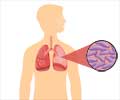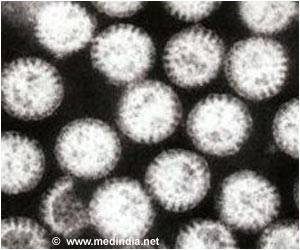Researchers provides a novel explanation as to why some tuberculosis cells are inherently more difficult to treat with antibiotics.

"We have found that the consequences of the simple and unexpected patterning of mycobacterial growth and division means some bacterial cells have the capacity to survive in the face of antibiotics," said Bree Aldridge, a postdoctoral fellow at HSPH and co-first author of the study.
Tuberculosis is an infectious disease that kills more than 1.5 million people annually. It is a difficult disease to treat; people are prescribed a combination of antibiotics to be taken daily for six to nine months, a regimen that is hard for patients to follow and for nurses and doctors to administer. Even after beginning appropriate treatment, it appears that some of the infectious cells survive for long periods of time.
The HSPH researchers, led by Aldridge, co-first author and visiting scientist Marta Fernandez-Suarez, and senior author Sarah Fortune, assistant professor of immunology and infectious diseases, along with colleagues from Massachusetts General Hospital, set out to determine what distinguishes a cell that lives from one that dies.
They designed a unique microfluidic chamber in which they grew Mycobacterium smegmatis cells (which behave similarly to Mycobacterium tuberculosis cells) and filmed their growth with a live-cell imaging system.
The researchers thought that the M. smegmatis cells would divide evenly into similar-sized daughter cells, as bacteria such as E. coli do. Instead, they were surprised to find that the M. smegmatis daughter cells were incredibly diverse, with highly variable sizes and growth rates. They found that this diversity arises because M. smegmatis grow in an unusual fashion, elongating from only one end. When an asymmetric mother cell divides, it creates daughter cells that are very different from one another in fundamental ways, including their growth properties.
Advertisement
To test this hypothesis, they treated the cells with different classes of antibiotics and observed how subpopulations of daughter cells responded. The results showed that the different daughter cells exhibited varying susceptibilities to the treatments, strong evidence that populations of mycobacterial cells contain cells that are inherently tolerant of antibiotics and providing an important piece to the puzzle of why tuberculosis is such a difficult disease to treat.
Advertisement
The researchers hope that their findings lead to the development of treatment regimens in which antibiotics are combined to specifically target tolerant subpopulations of cells.
Source-Eurekalert











